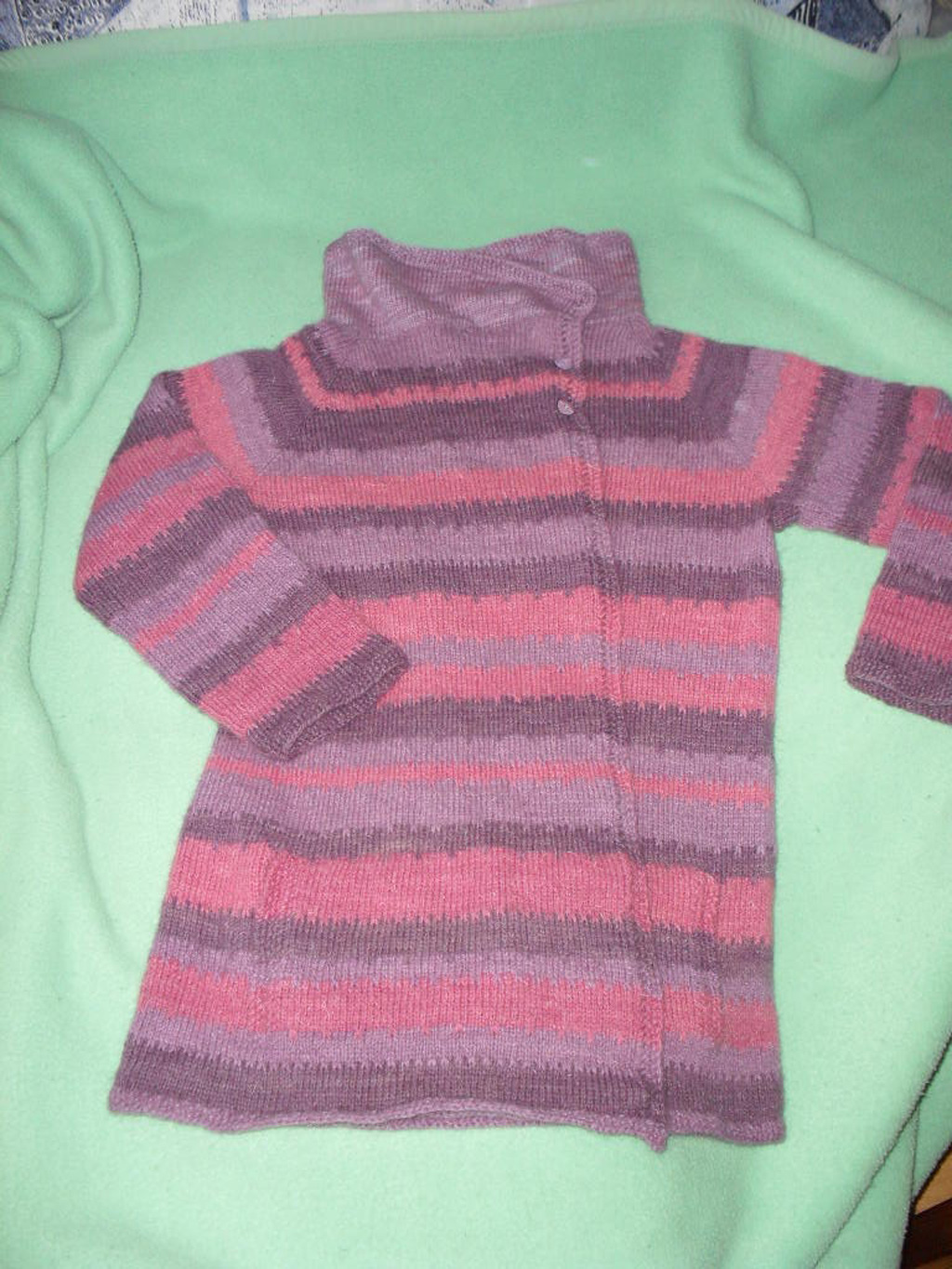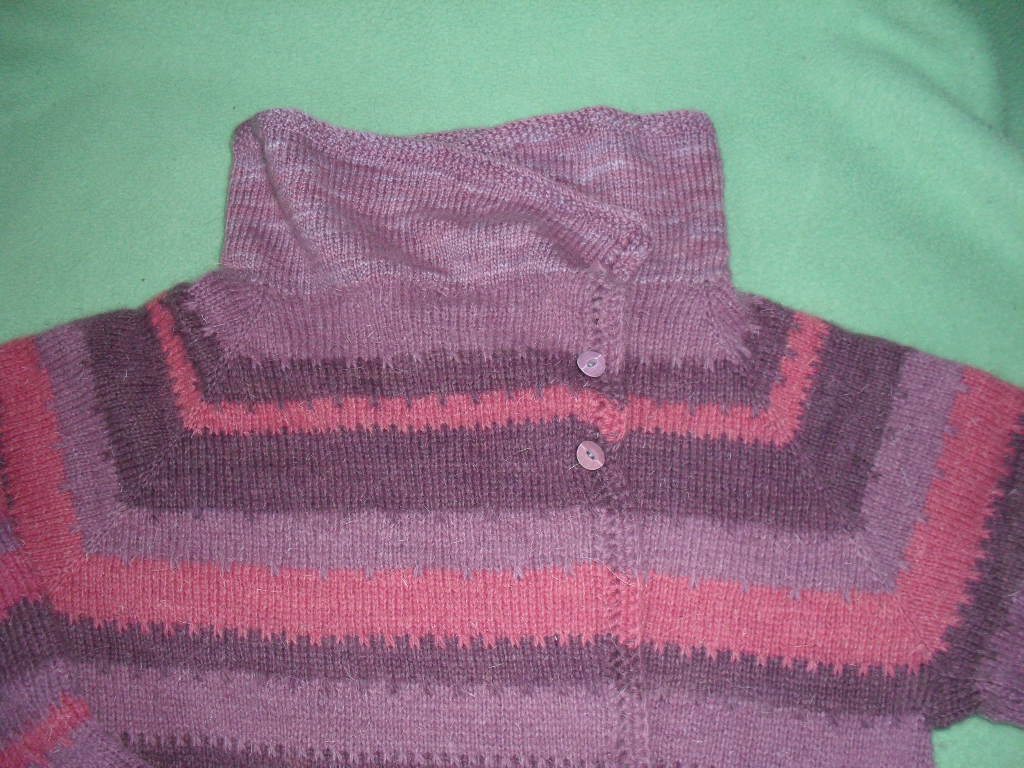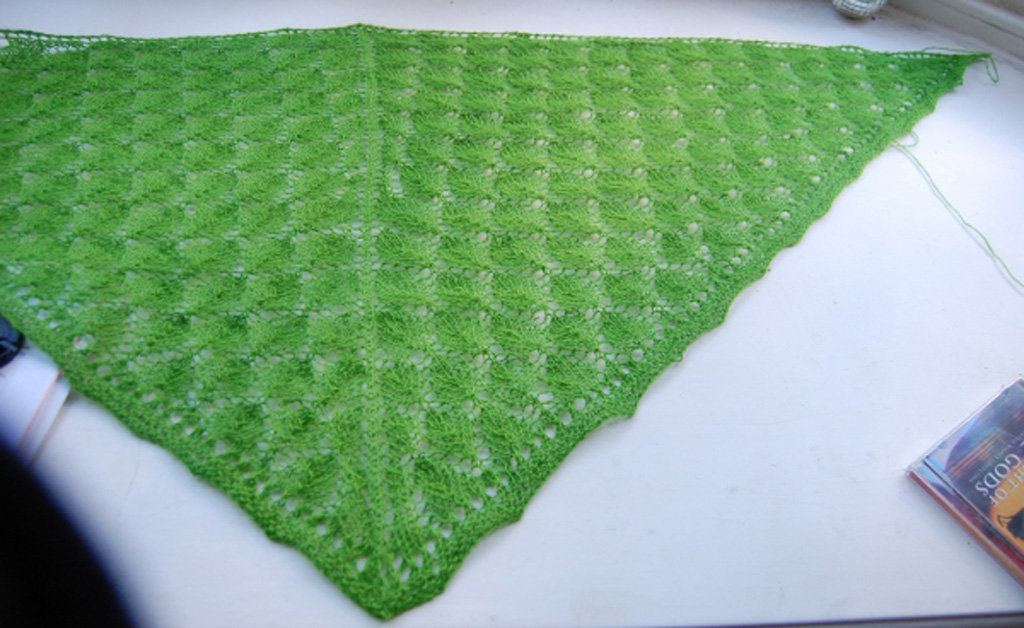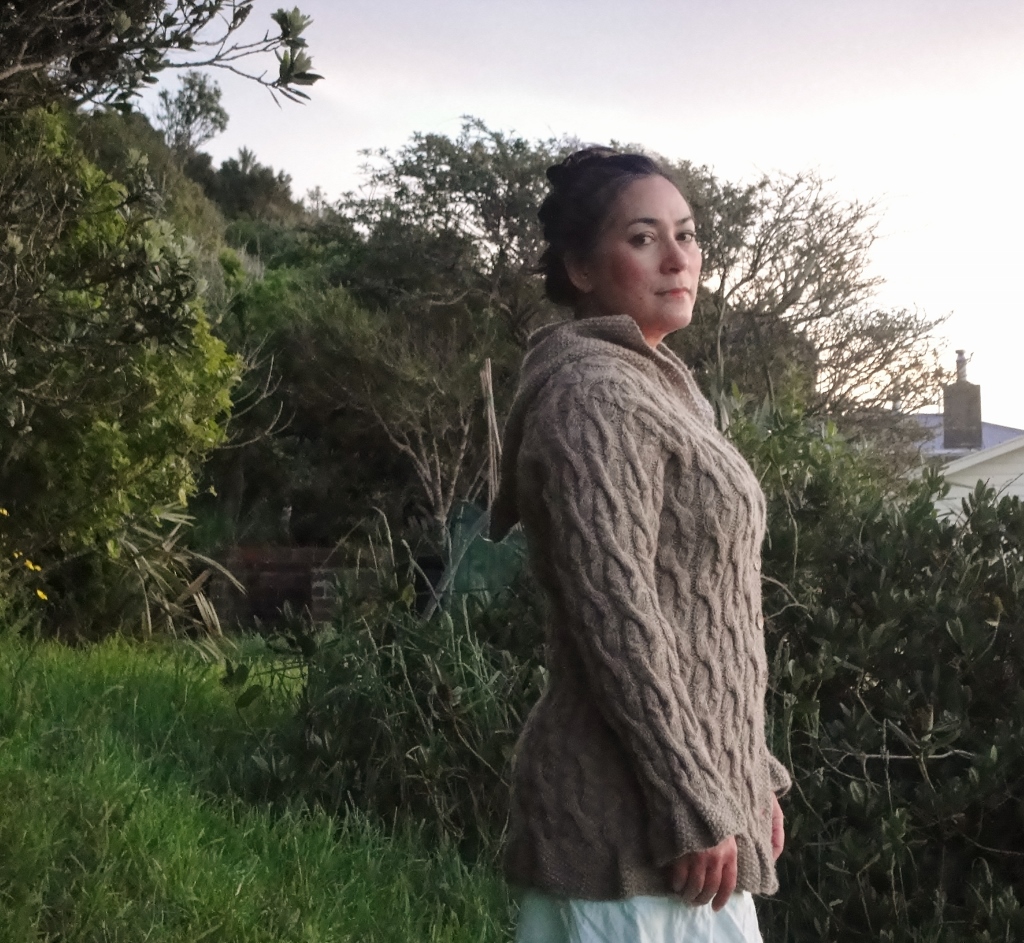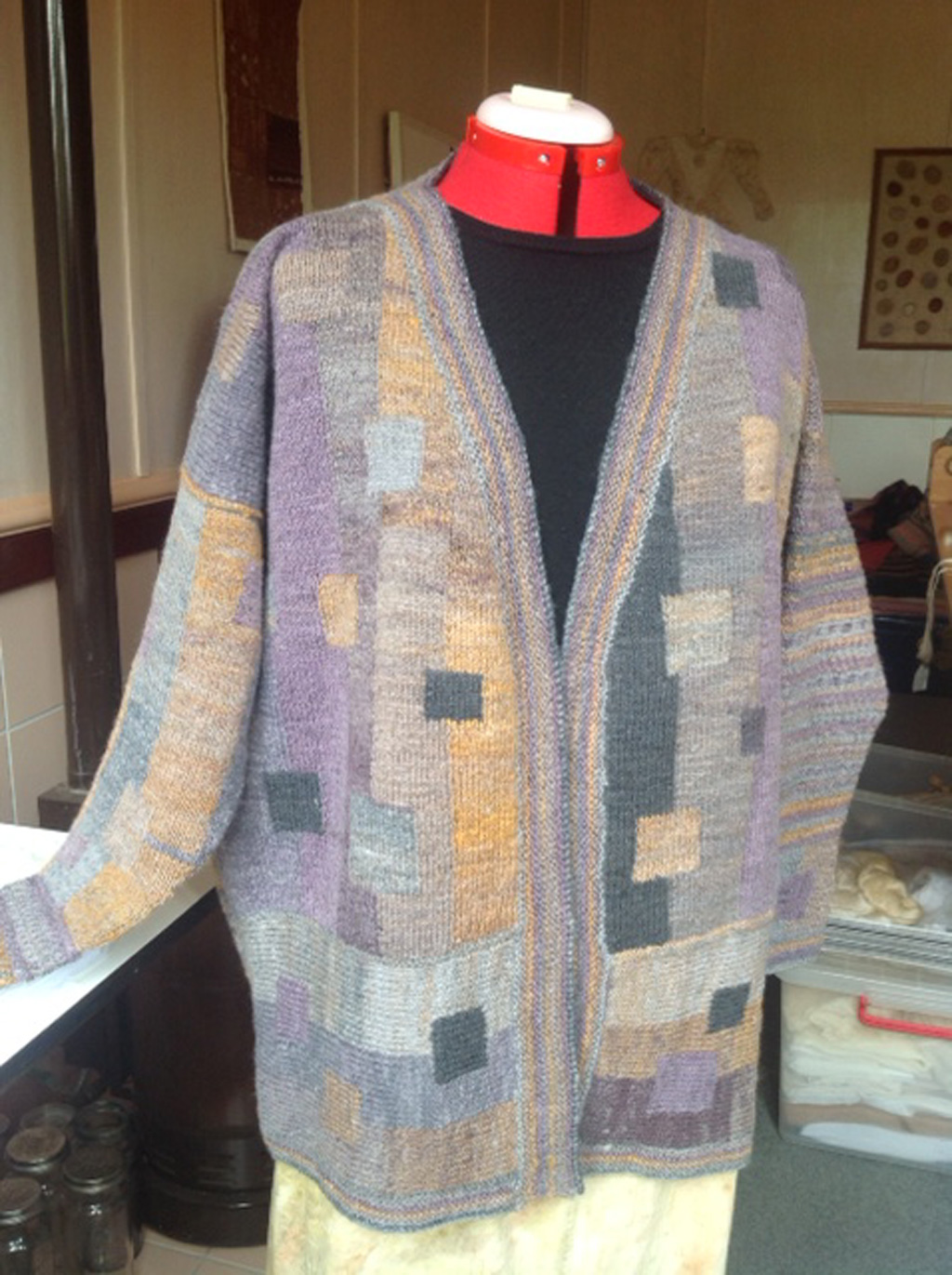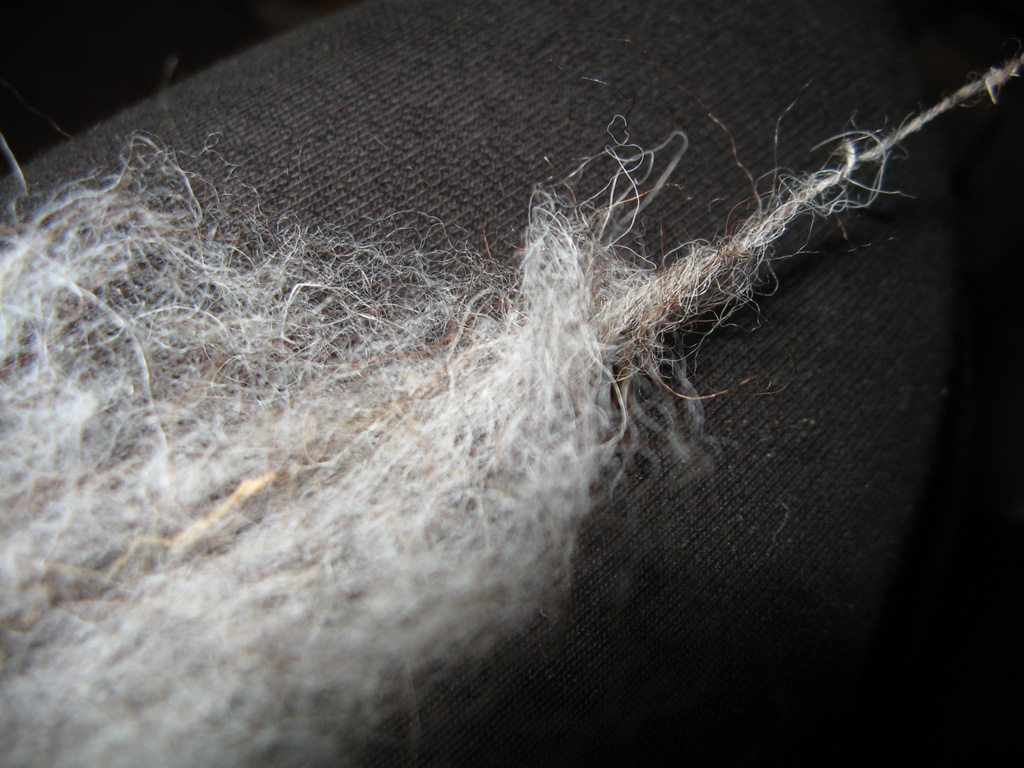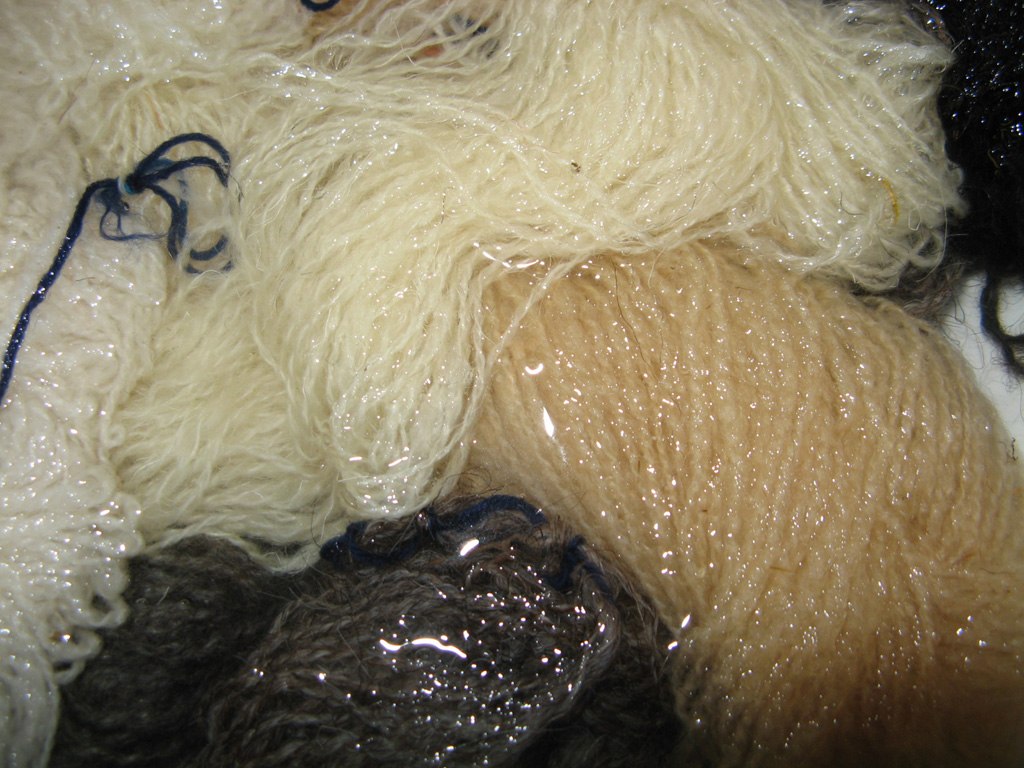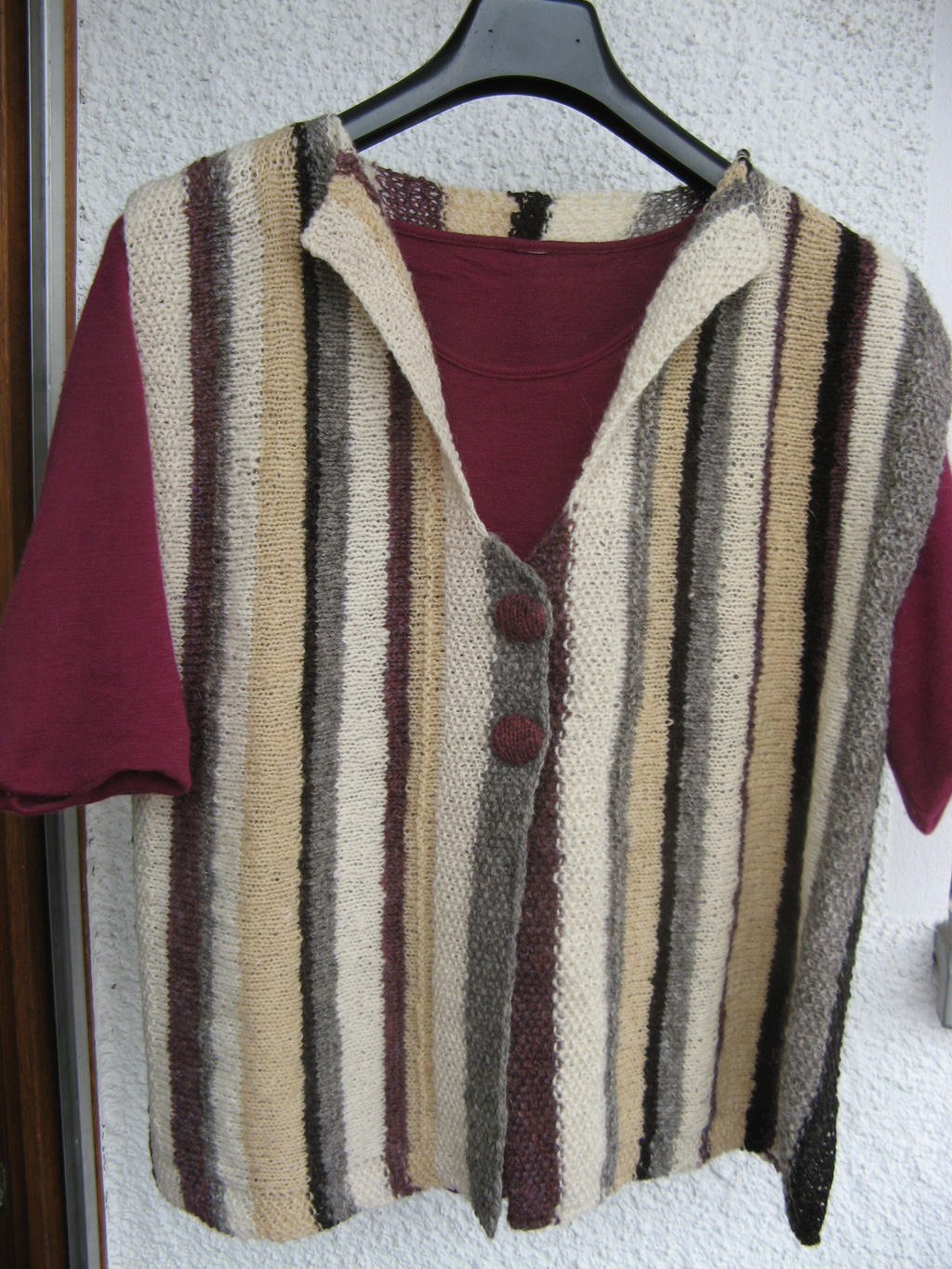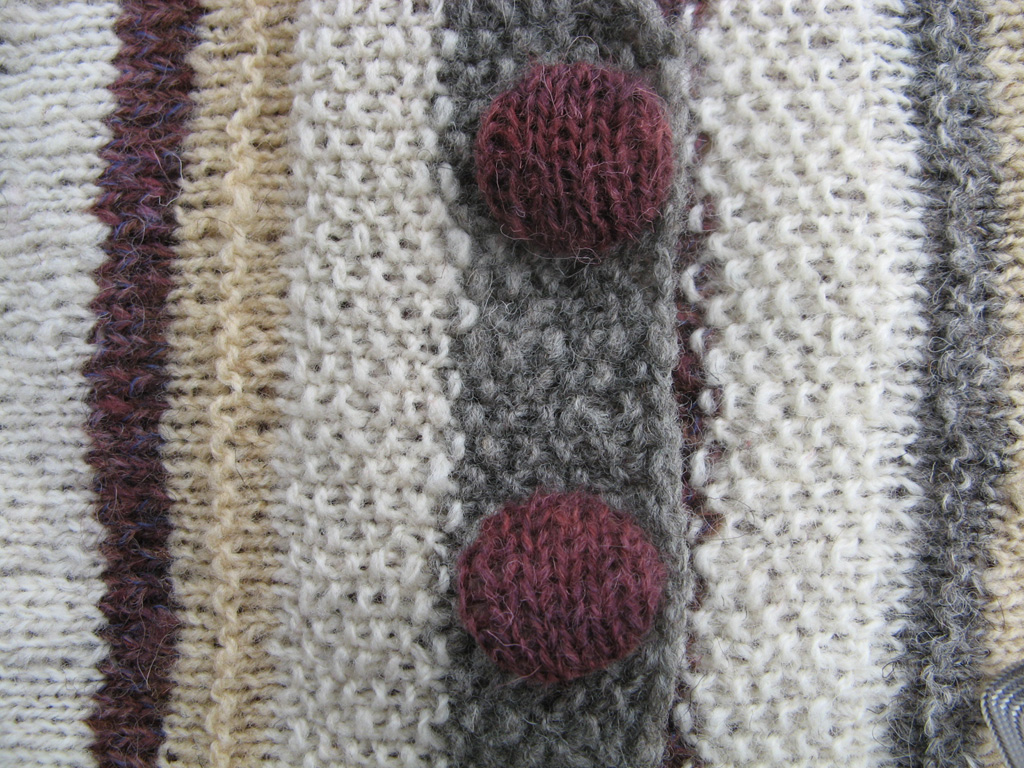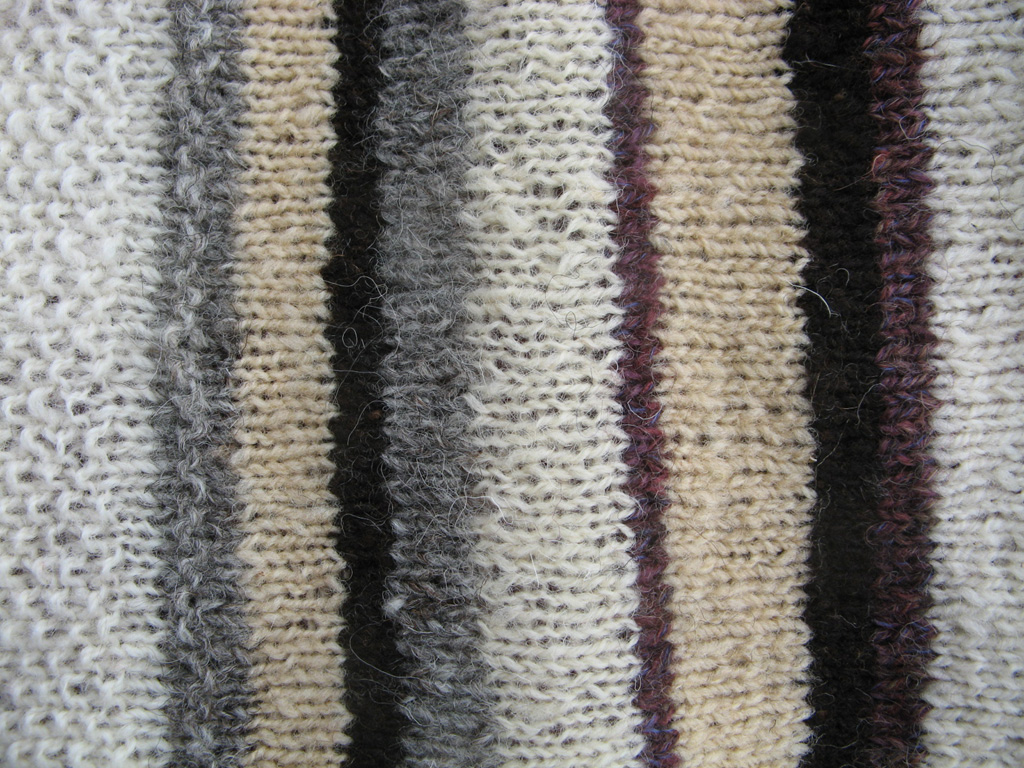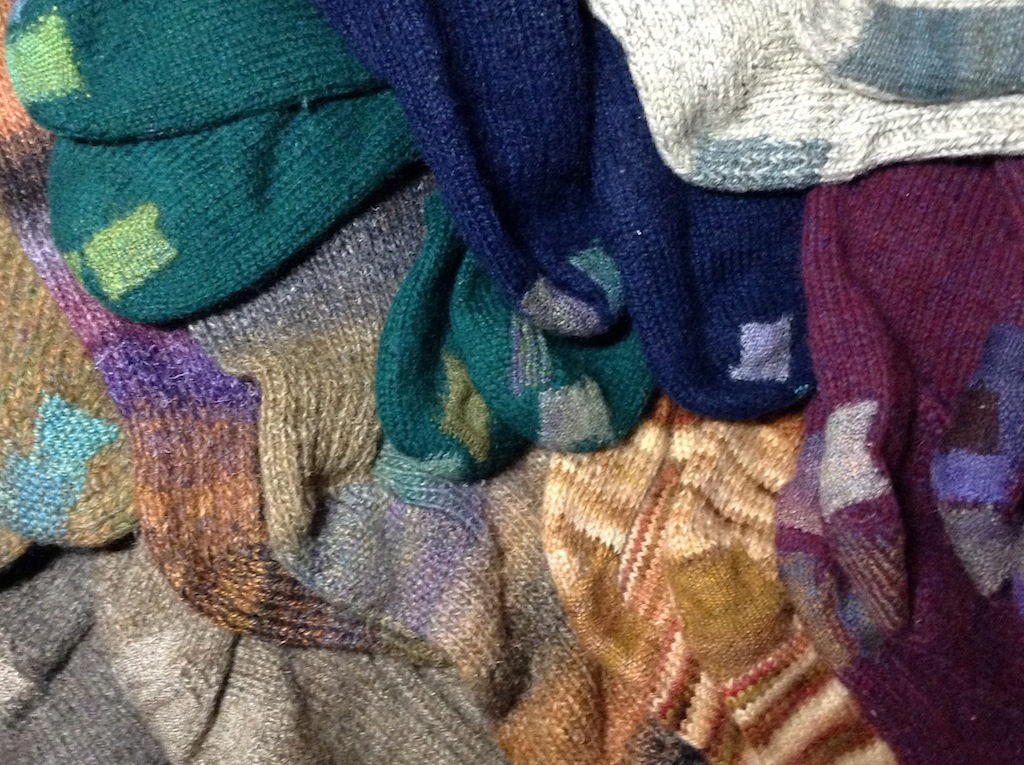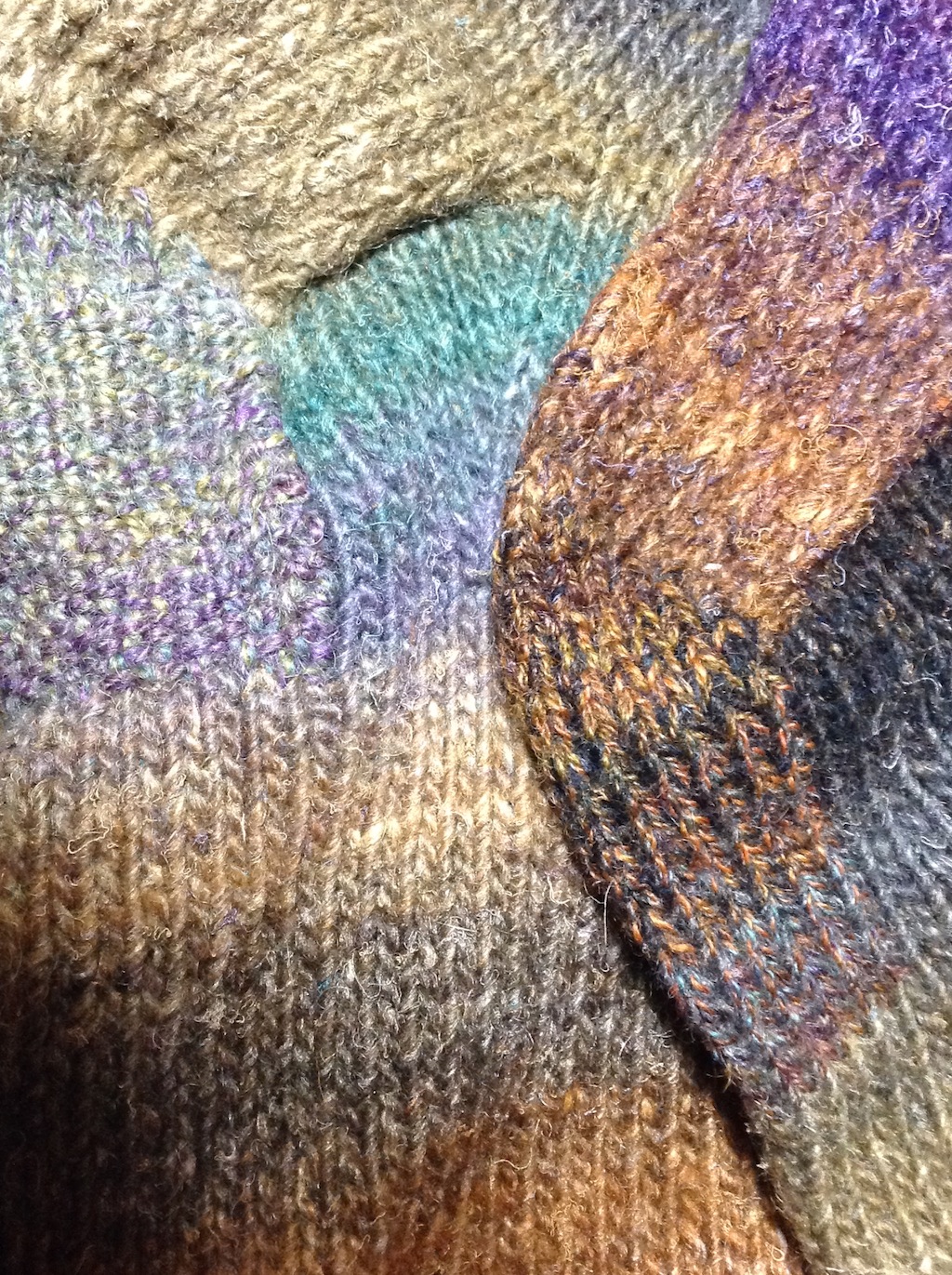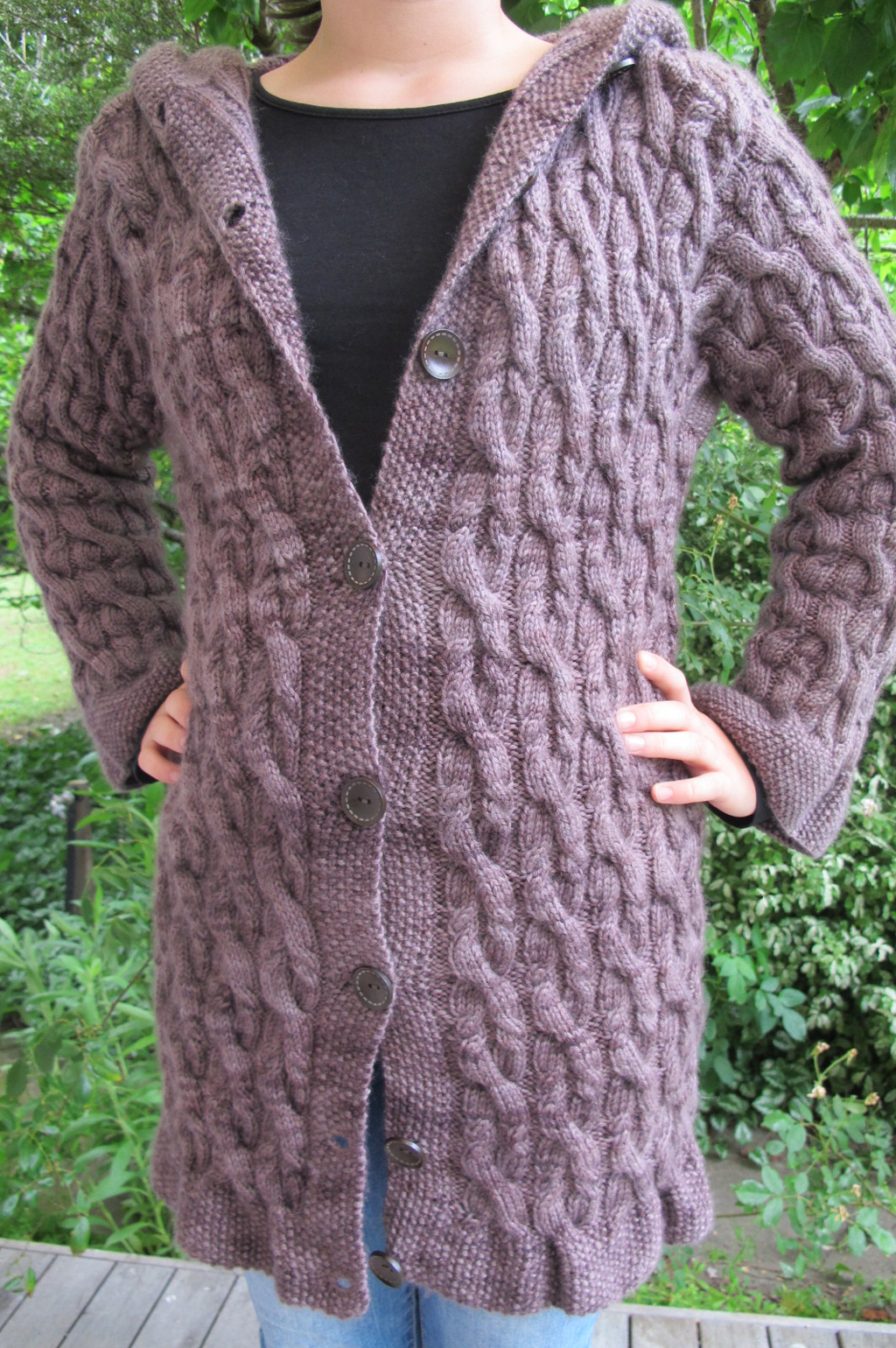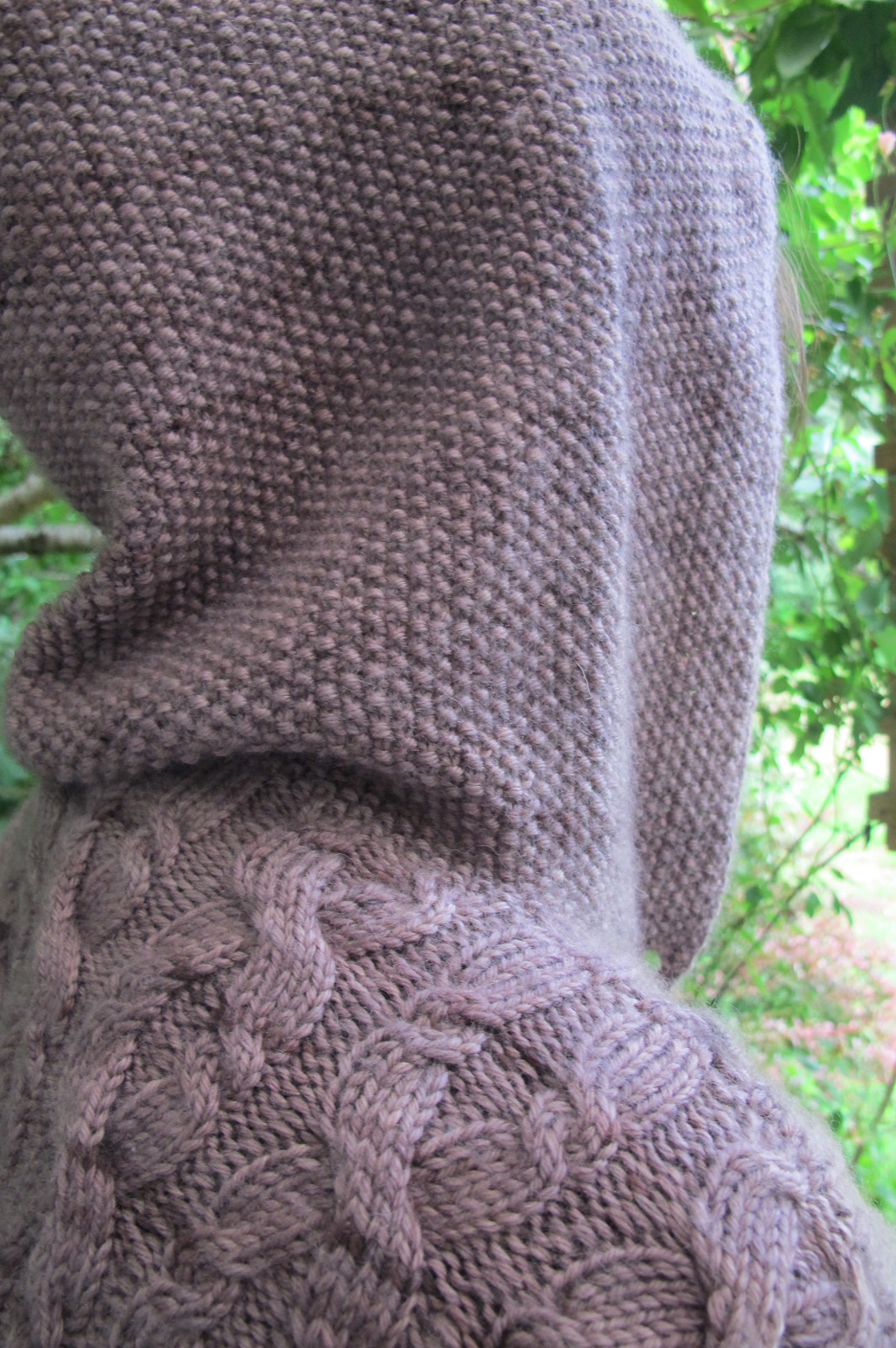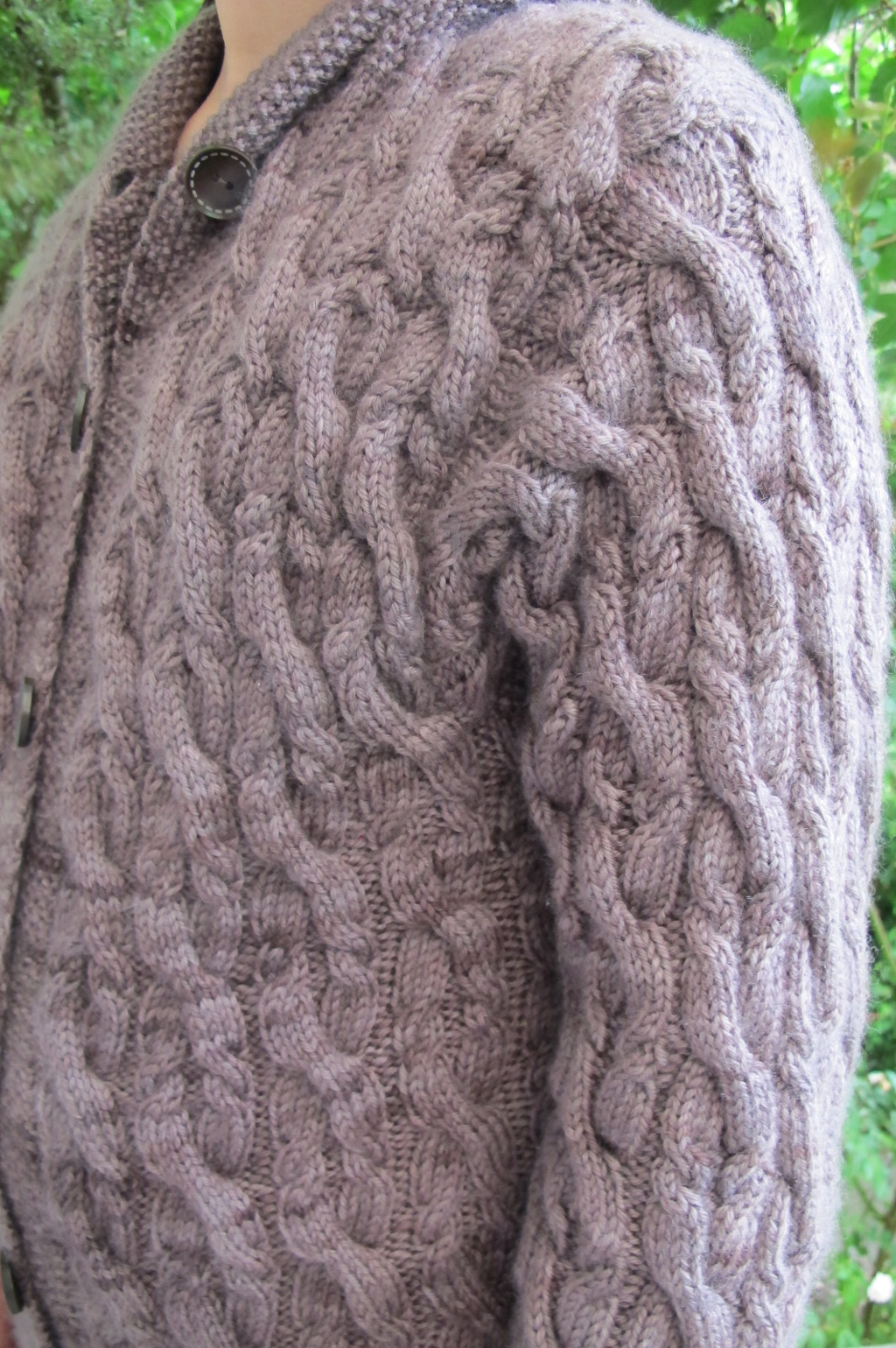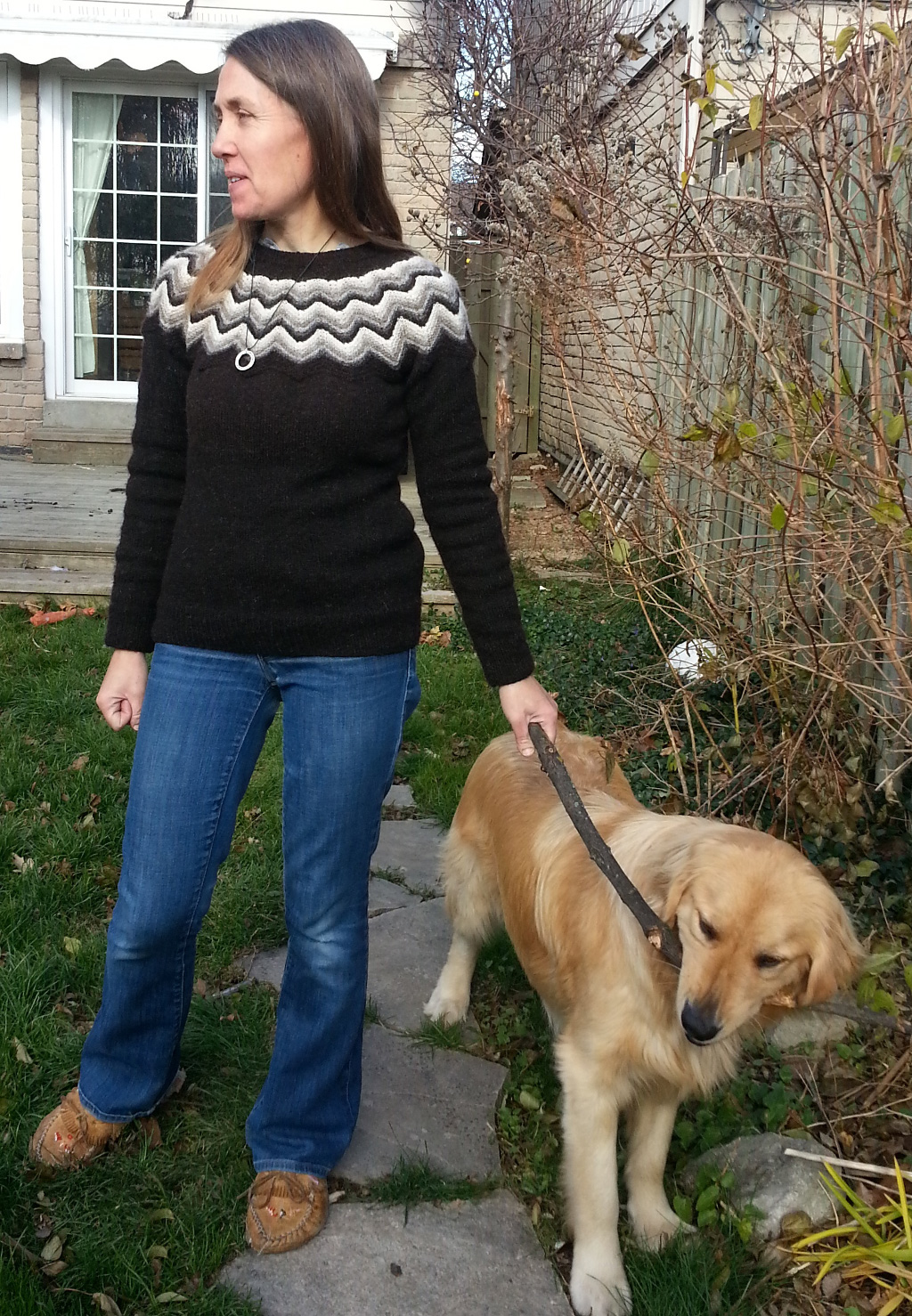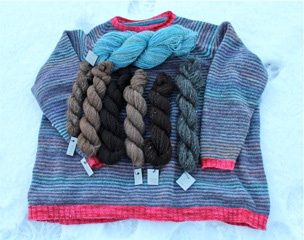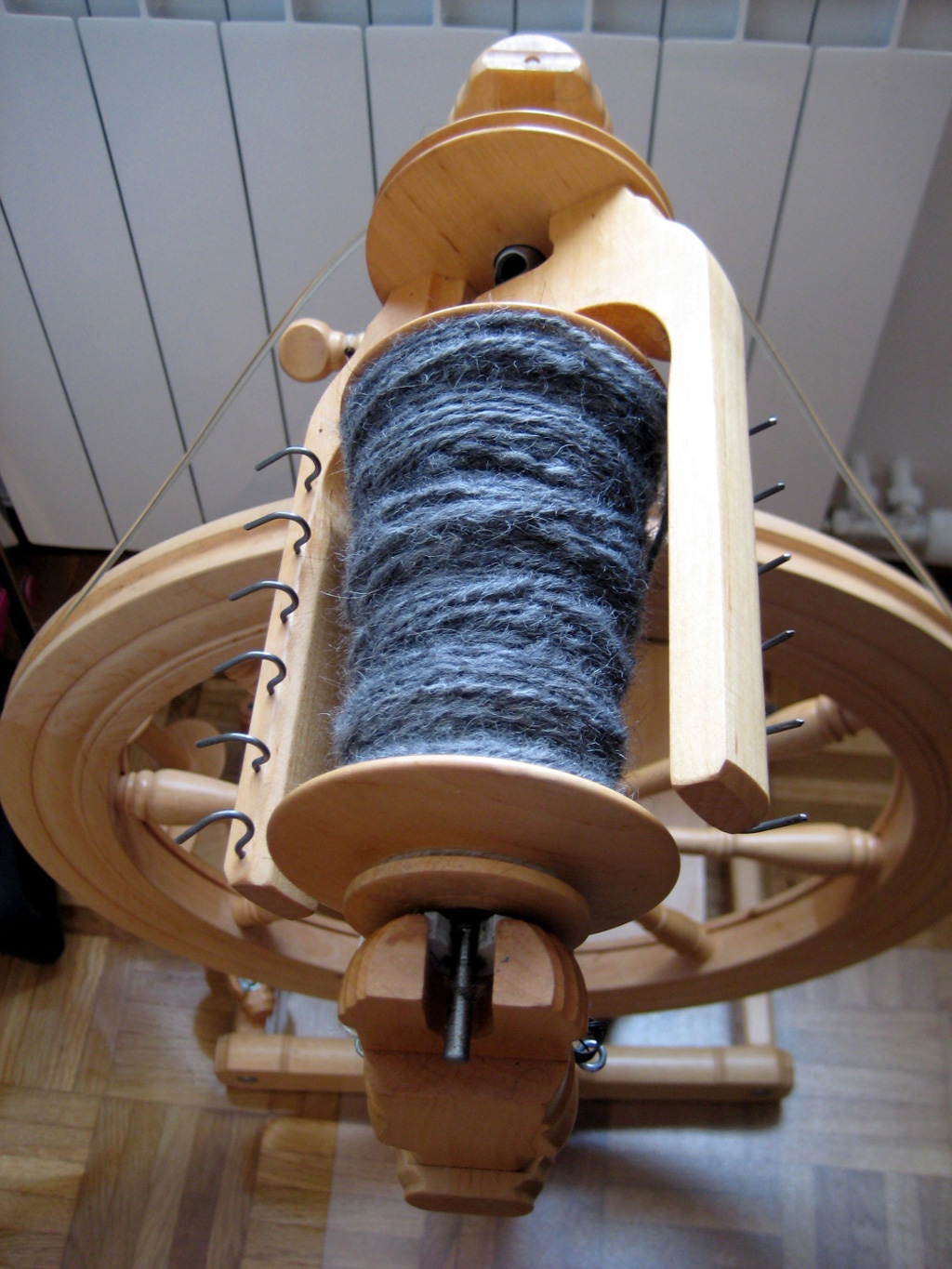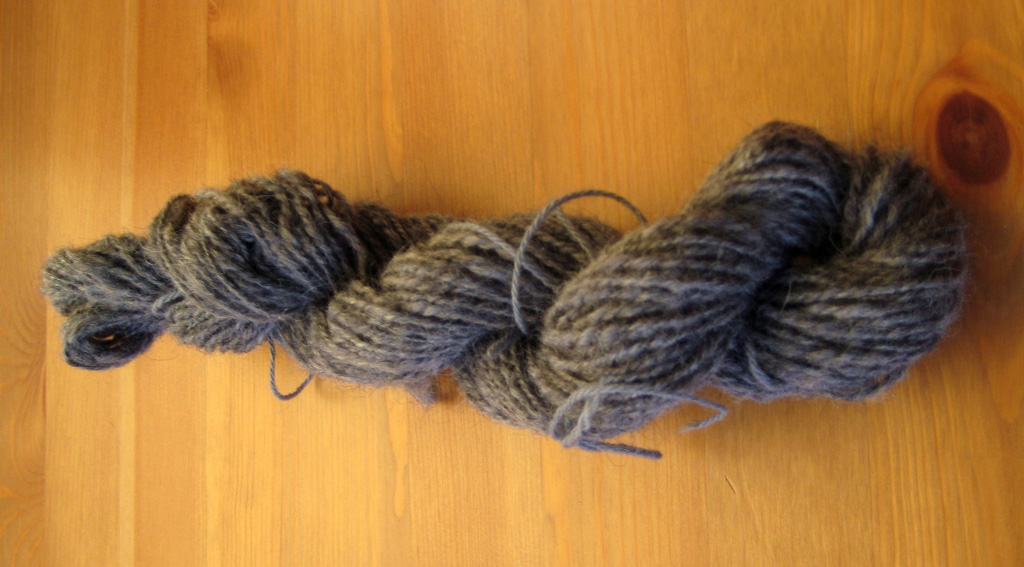This is it, folks, the last post of WOVEMBER 2013! Don’t worry though, as usual there will be a few afterwords… we still need to identify the winners of the WAL and of the photo competition! In the meantime, as promised, here are some of the BEAUTIFUL things people have been doing with WOOL during this month!
Thanks all for reading, re-tweeting, commenting, sharing and encouraging our daily postings. We are so glad you all seem to love WOOL as much as we do! And now, without further ado, and in no particular order… here are the WAL projects that have been sent into us. All content and photos © the individual contributors.
‘I want to show you my finished Cardigan Clarity: I was able to spin enough yarn of Cormo and dye it nearly the same color as one of the used Xisqueta ones, so I used that for the Cowl collar…
…I am really quite proud of my first cardigan. Thanks again for all the wonderful inspirations on your website. Have a nice Christmas time’ – Birte Kurth
‘I’ve finished this scarf (‘first scarf’) but not sewn it up yet. It’s knitted on a 3.5mm circular needle with a picot edge, I will turn under and sew the hem which is in a bit of cashmere. The wool is mostly from a 100% wool jumper I bought in a charity shop, unpicked and washed, mixed with Jamieson&Smith jumper yarns. I think the jumper was originally J&S as some colours match exactly. The patterns are picked from Alice Starmore’s Fair Isle book…
…The second scarf (‘LonelyTreeEin02’) is knitted in Icelandic lace-weight yarn, called Einband, which I bought direct from Iceland via a website a while ago. The pattern I picked up in a charity shop. it took a few trials before I got the right gauge – 5mm needles. I think it needs a bit more washing and rubbing to soften up though…
…I love the Wovember series – it’s really making me knit more!’ – Carys Davies
‘During Wovember I worked on Kate Davies’ “Shepherd Hoody”. It is knitted in pure New Zealand Corriedale wool yarn. The sheep are farmed by Anna Gratton, who also processes and spins the wool into yarn in her mill on her farm in Feilding. Incidentally, at least one of the shearers is also a woman!
I thought this project encapsulated the spirit of the hoodie very well in supporting a local shepherdess and wool producer. All my favourite projects are knitted in this yarn – it is very durable very, very, comfortable and cosy to wear’ – KiwiPurler (on Ravelry)
‘This jacket was already in process since July, but completed in Wovember. I started with some lovely Finn wool, which was faux solar dyed in jars on the top of my wood stove in winter in Australia. I used natural dyes, logwood, lac, cutch and madder, the wool was blended and drum carded and made into rolags and spun with a long draw, the resulting blends were then knitted into a jacket. My design was inspired by Lynne Vogel’s book The Twisted sisters knit Sweaters, using both intarsia and slip stitches to show off the blended colours’ – Faye Cumming, Bullarto, Australia
‘My project is to make a vest out of wool from different German sheep breeds such as:
Merino Landschaf– the special type which is common in the Wuerttemberg area in southern Germany;
Coburger Fuchsschaf
Rhoenschaf
Skudde
Waldschaf (Forest sheep)
Pommersches Landschaf
Juraschaf (Black mountain sheep)
Bergschaf (Mountain sheep)
Alpines Steinschaf
Unfortunately, I do not know the breed names in English.
I keep some of the Merino Landschafe on my own and the wool of the other breeds I got from fellow shepherds.
I washed the fleeces, carded, spun and plied the wool.
…The idea of Wovember and the WAL is great! I tell it to everybody working with wool in my reach :-)…
Now I have finished my project.
It was quite an experience to work with such a variety of different wool types. I found that I had to avoid working edges with “Alpines Steinschaf” and “Waldschaf” which are the most primary breeds which I used because their wool is less elastic than all the others. All colour are natural 2ply yarns with the exception of one: the stripes in “heather” is a dyed 3ply yarn from my favourite sheep “Mia” which is a crossbred between Merino Landschaf and Bergschaf (Mountain Sheep).
I am happy that I managed to finish the vest in time though I am a bit sad that the project is over now.
Thank you for the idea of WOVEMBER! We too have a long tradition of sheep breeding in our region and we try to put the value of wool back into the heads of the people’ – Beate Herold, Nuertingen, Germany
‘One of my first weaving projects (I decided to learn a new ‘woolly’ skill as part of Wovember) woven with hand dyed lace weight blue faced Leicester wool’ – Rachel Raynor
‘I seem to have darned holes in 13 pairs of socks. Roughly a hole a day, but sometimes 2 or 3. I used my own hand-spun yarn for all of the holes. Photo 1 is a picture of all the Wovember-mended socks I could find (I couldn’t find two pairs – I think they are on people!). Some of the darns were already there. There has been much darning on darning! Plus 2 pictures of a couple of my favourite mendings. Most of the mending is very visible because the darns make me happy! But I was quite pleased with my not-so-visible darning of some of the socks…
…this photo above shows two darned heels in a pair of socks knitted in Noro yarn. A conventional woven darn on the left and a Swiss darn on the right. I liked the exercise of matching my handspun wool with the Noro colours…
…this is my favourite darn. I love the little triangle!’ – Cecilia Hewett
‘My Shepherd Hoody – a fabulous pattern and a finished piece that I am absolutely thrilled with’ – Sally Duncan
‘Here is my Wovember WAL project: Kate Davies’ Puffin sweater, knitted in Jamieson and Smith Shetland Supreme, with natural black as the main colour, and yuglet, shaela, sholmit, mooskit, katmollet, gaulmogot, and white, for the yoke. Thank you for making this Wovember a truly wonderful, woolly month!’ – Valerie Heuchan
‘My aim was to spin wool from six Short Tailed North European sheep breeds during the WAL. I managed four, because I couldn’t get Åland fleece in November. I also hadn’t thought that I would hurt my back, so I spun less than I thought and skipped Kainuu Grey (I have spun that breed earlier).
I spun brown and black Swedish Finullsheep, and brown and black Finnish Landrace aka Finn aka Finnsheep. I already knew the two breeds resemble each other, in fact so much that it’s not possible for me to tell which is which. The wools also are quite similar. If I lay out locks and close my eyes, mix them, and look again, I can’t tell which is which. There’s white, brown and black Finull and Finn. You can blend them into lots of colours. A mill here in Ostrobothnia where I live used to spin 24 different colours by blending. Both breeds grow soft, lustrous wool wool with a fairly tight crimp. I handcarded and spun my samples woolen with a double draw.
I also spun a test skein of Värmlandsheep wool. This is a Swedish landrace with a double coat in white, brown or black, the browns from light to dark. The quality of the fleeces vary a lot, from almost only soft, short undercoat to pretty harsh and long fleeces with a distinct over coat. I chose a harsh one for my sample skein, but I also have a lovely fleece with mainly undercoat. Those kind of fleeces were chosen for vadmal, the waulked cloth that was of such great importance for centuries in Scandinavia. You can card the soft undercoat and the harsh overcoat together, or separate them and comb the guard hairs, and card the undercoat. You can then choose between spinning woolen or worsted and get several types of yarn. I carded and spun my sample woolen. The yarn would be nice in a rough blanket.
I have lovely light and dark grey Gotland fleece from Gotland. I carded and spun some of the dark grey with a woolen draw. Next week I’ll test combing to see which of my combs will produce the best prep for woven bands. The woolen skein is softer than I first thought it would be.
I also spun a skein of Finull/silk. I acid dyed the wool in September in my steam cooker, a brilliant investment! I rolled the washed locks in glad pack the same way you do with tops and rovings, and steamed for about 50 minutes. The result was lofty, nicely dyed locks that were easy to hand card. I added commercially dyed silk top and silk noils for texture and spun woolen.
And I also knitted a sweater. I used a handspun, very ugly yarn I’ve had in my stash for years. It loved being knitted in stripes together with a commercial wool/silk yarn, and a mill spun Finnsheep yarn I dyed in a warm red tone.
I’m satisfied with what I achieved during Wovember. I feel I’m part of a community, even if I’m the only spinner here. It’s been a great joy to start each day by reading the posts, following links, and looking at the photos…
…The photo from left to right: Värmland, brown and black Finn, brown and black Finull, Gotland. Blue Finull/silk’ – Barbro Heikinmatti
‘Finally, I have spun the Gotland wool’ – Idurre Aizpurua Iturralde
Thank you all for sharing your inspiring spinning, knitting, designing, darning etc. with us this WOVEMBER! It has been wonderful to WAL with you… we shall announce the winners in coming days. Meanwhile, WE HOPE EVERYONE HAS HAD A WARM & WOOLLY WOVEMBER,
For now,
Yours in WOOL xxx
Team WOVEMBER
